by the same author
Work with Young Women
Activities for Exploring Personal, Social and Emotional Issues
Vanessa Rogers
ISBN 978 1 84905 095 1
Work with Young Men
Activities for Exploring Personal, Social and Emotional Issues
Vanessa Rogers
ISBN 978 1 84905 101 9
of related interest
Bully Blocking
Six Secrets to Help Children Deal with Teasing and Bullying Revised Edition
Evelyn M. Field
ISBN 978 1 84310 554 1
Understanding 1214-Year-Olds
Margot Waddell
ISBN 978 1 84310 367 7
The Tavistock Clinic Understanding Your Child Series
Deenos Dream Journeys in the Big Blue Bubble
A Relaxation Programme to Help Children Manage Their Emotions
Julie Langensiepen
Illustrated by Gerry Turley
ISBN 978 1 84905 039 5
CYBERBULLYING
ACTIVITIES TO HELP CHILDREN AND TEENS TO STAY SA FE IN A TEXTING, TWITTERING, SOCIAL NETWORKING WORLD
Vanessa Rogers

Jessica Kingsley Publishers
London and Philadelphia
First published in 2010
by Jessica Kingsley Publishers
73 Collier Street
London N1 9BE, UK
and
400 Market Street, Suite 400
Philadelphia, PA 19106, USA
www.jkp.com
Copyright Vanessa Rogers 2010
All rights reserved. No part of this publication may be reproduced in any material form (including photocopying or storing it in any medium by electronic means and whether or not transiently or incidentally to some other use of this publication) without the written permission of the copyright owner except in accordance with the provisions of the Copyright, Designs and Patents Act 1988 or under the terms of a licence issued by the Copyright Licensing Agency Ltd, Saffron House, 610 Kirby Street, London EC1N 8TS. Applications for the copyright owners written permission to reproduce any part of this publication should be addressed to the publisher.
Warning: The doing of an unauthorized act in relation to a copyright work may result in both a civil claim for damages and criminal prosecution.
All pages marked  may be photocopied for personal use within this programme, but may not be reproduced for any other purposes without permission of the publisher.
may be photocopied for personal use within this programme, but may not be reproduced for any other purposes without permission of the publisher.
Library of Congress Cataloging in Publication Data
Rogers, Vanessa.
Cyberbullying : activities to help children and teens to stay safe in a texting, twittering, social networking world / Vanessa Rogers.
p. cm.
ISBN 978-1-84905-105-7 (alk. paper)
1. Cyberbullying. 2. Internet and teenagers--Psychological aspects. 3. Social networks. I. Title.
HV6773.R64 2010
302.34--dc22
2009048748s
British Library Cataloguing in Publication Data
A CIP catalogue record for this book is available from the British Library
ISBN 978 1 84905 105 7
eISBN 978 0 85700 228 0
CONTENTS
INTRODUCTION
The vast majority of children and young people are computer literate and own mobile phones, providing them with almost unlimited access to information and the ability to keep in touch around the globe. Whether at home or in school, libraries or in Internet cafs, young people can utilize a vast range of digital communication tools to share experiences and keep in touch in a way that previous generations could only imagine.
However, there is a darker side to this shiny new digital world, defined as cyberbullying. This is when technology is misused to threaten, harass, humiliate or embarrass victims.
As access to digital communication grows, methods of cyberbullying have become more sophisticated. From nuisance phone calls to bogus websites, the victims of cyberbullies can be targeted with little effort and minimal cost to the bully, leading to widespread concerns about how children and young people can stay safe in a texting, twittering and social networking world.
How to use this book
This book sets out to help children and young people to be safe and stay healthy, to raise awareness about online safety, provide opportunities to help them understand cyberbullying, and define clear boundaries to online behaviour.
Suitable for parents of children and teens at home, or adults working with young people in youth clubs or school, all the advice and ideas in this book are designed to be inclusive, or easily adapted to meet the individual needs of each child. Some of the activities can be used with groups of around 8 to 15 children and young people, but can be altered to facilitate larger numbers or scaled down for you to explore digital safety with just one child.
No expert technological knowledge is required of you to be able to do these activities. They work on the basis of developing skills, attitudes and learning. This means that they encourage young people to reflect on their values and attitudes to cyberbullying and build personal skills that enable them to be assertive and develop resilience. It is hoped that this will enable them to make healthy, positive choices. Alongside this, factual information is offered in the following section, and sources of additional information are signposted at the end of the book.
The main part of the book is split into three sections: Warm Ups, which can be used to introduce the topic and spark interest, Activities, which explores issues in more depth, and Reviews, which enables you to consider what has been learnt. For teachers and youth workers, opportunities for recorded outcomes are indicated.
The book is written to be as flexible as possible parents can dip in and out of the exercises to increase their own knowledge and so help their children, and teachers or youth workers can use the session plans as stand-alone modules or together to build a wider curriculum.
Timings, which feature at the start of each activity, are offered as a guide, but these will need to be amended depending on the group size and ability the larger the group the longer the activity will take!
UNDERSTANDING CYBERBULLYING
What is different about cyberbullying?
We have probably all heard the old adage about sticks and stones, the message being that words can never hurt you. But just how true is this? While it is certainly true that physical bullying is unacceptable behaviour, cyberbullying can be just as frightening, leaving behind emotional rather than physical scars.
Cyberbullying is different from face-to-face bullying because the bullies can keep a distance between themselves and their victims. This affords the bully a level of anonymity and a perceived sense of security that convinces them they wont get caught. It also makes it easier to forget what theyve done and, as they dont see the harm caused, any feelings of guilt or empathy are minimized. Not knowing the identity of the bully can make the victim distrustful of many people.
The enormity of the online world means that one image sent via an Internet chatroom can be viewed literally millions of times around the world in a very short time, and electronically forwarded content is hard to control. It may be a single incident for the perpetrator, but can have multiple impact as it is passed around.
However, it is worth mentioning that, while some cyberbullying is obviously deliberate, some incidents do start as a joke. For example, derogatory remarks passed between friends that then circulate outside the intended group can lead to embarrassment or hurt. Such incidents often leave the perpetrators surprised at the distress they have caused and horrified to be branded bullies, when in fact they have just been thoughtless.

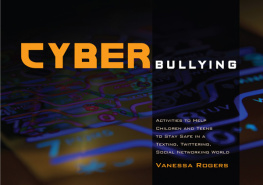

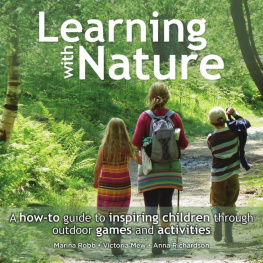

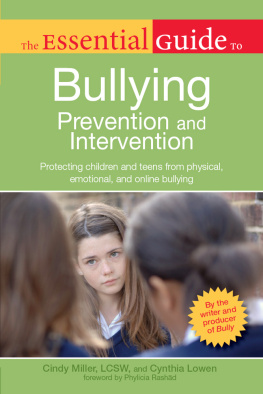

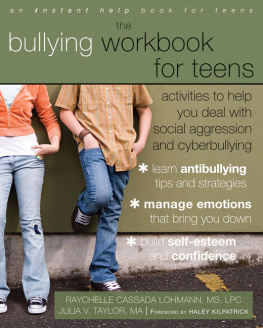

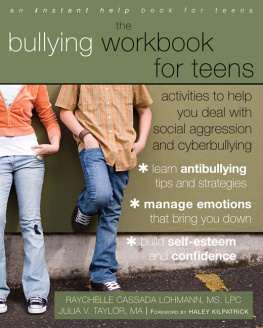


 may be photocopied for personal use within this programme, but may not be reproduced for any other purposes without permission of the publisher.
may be photocopied for personal use within this programme, but may not be reproduced for any other purposes without permission of the publisher.